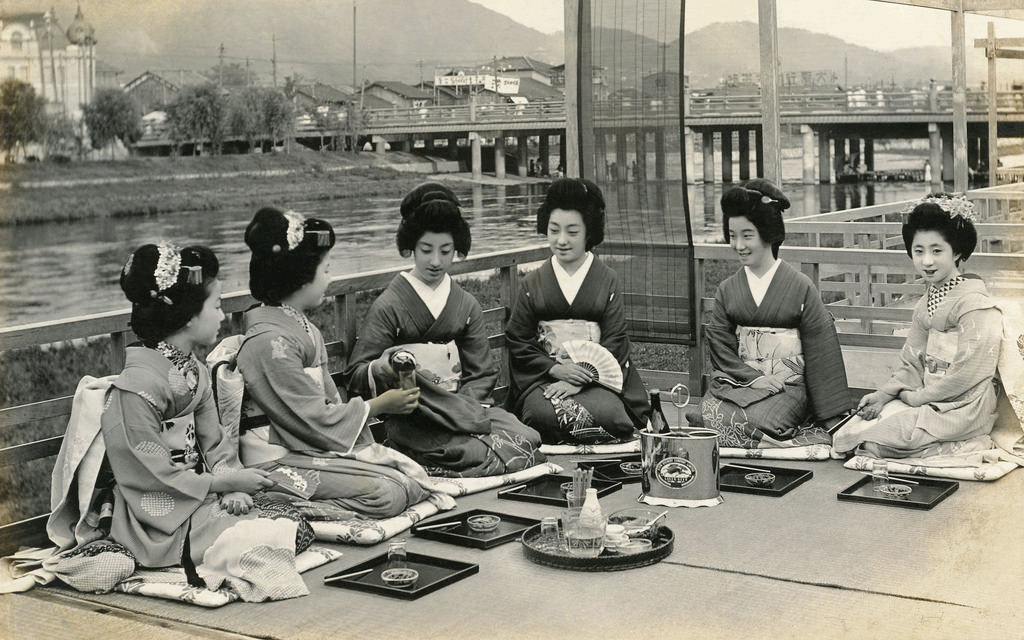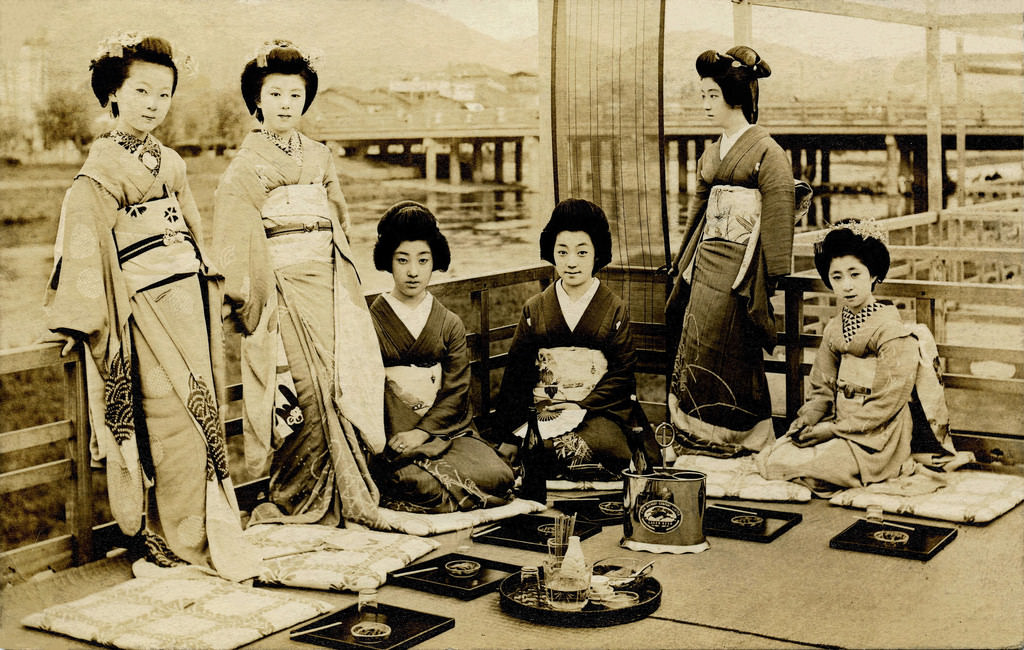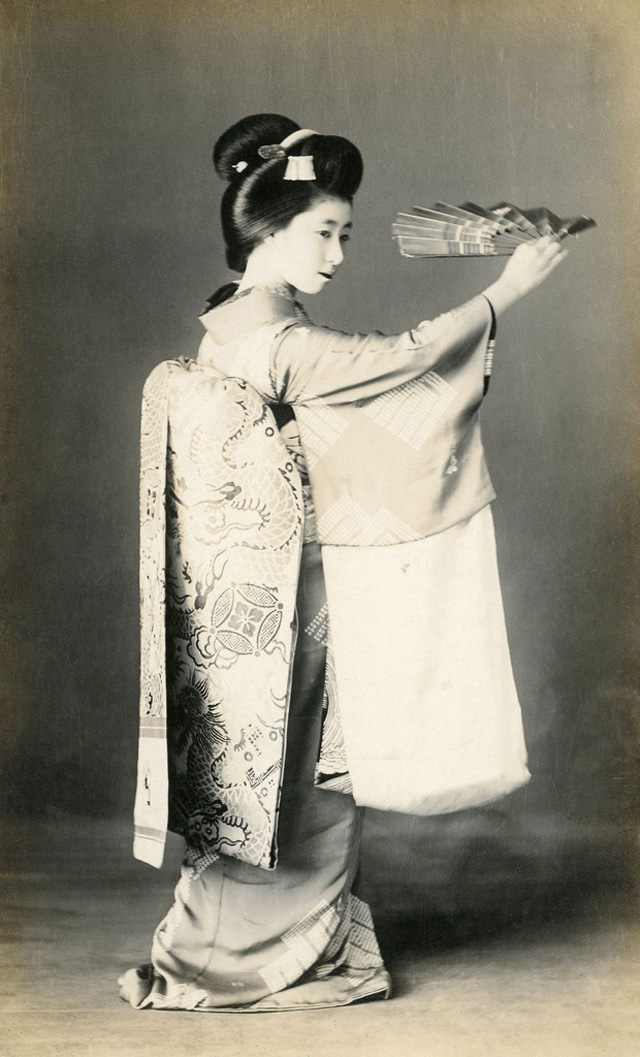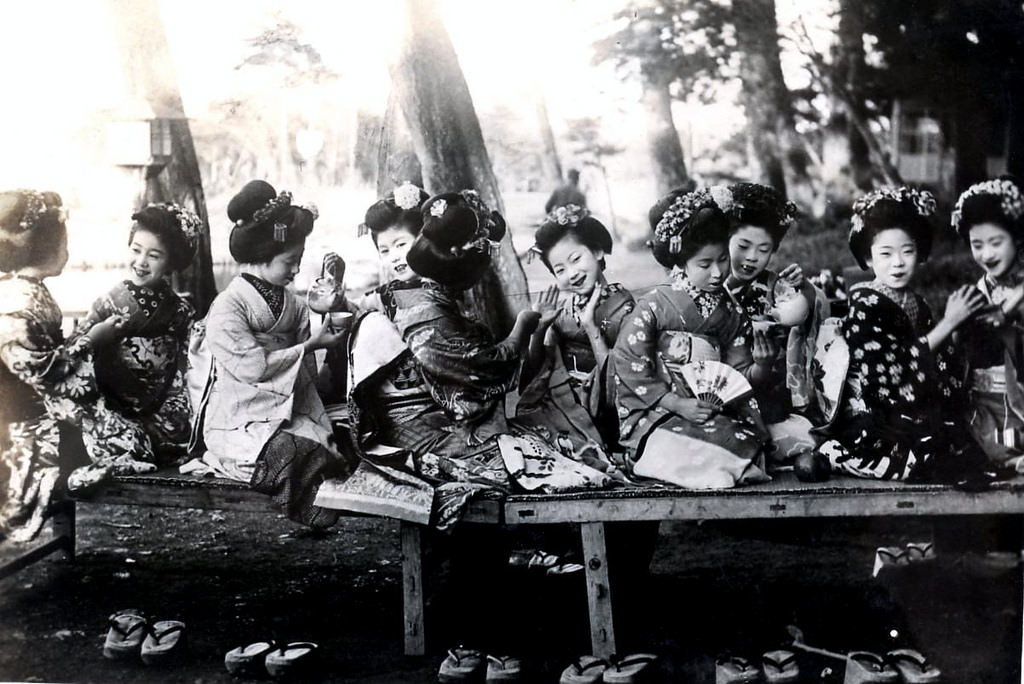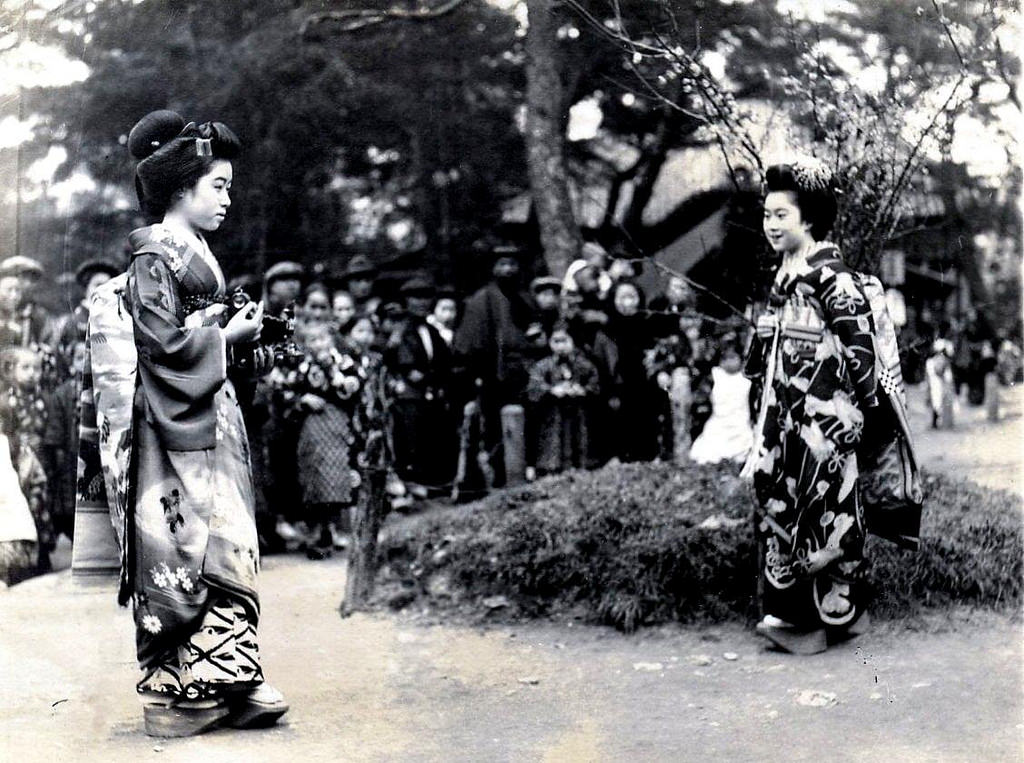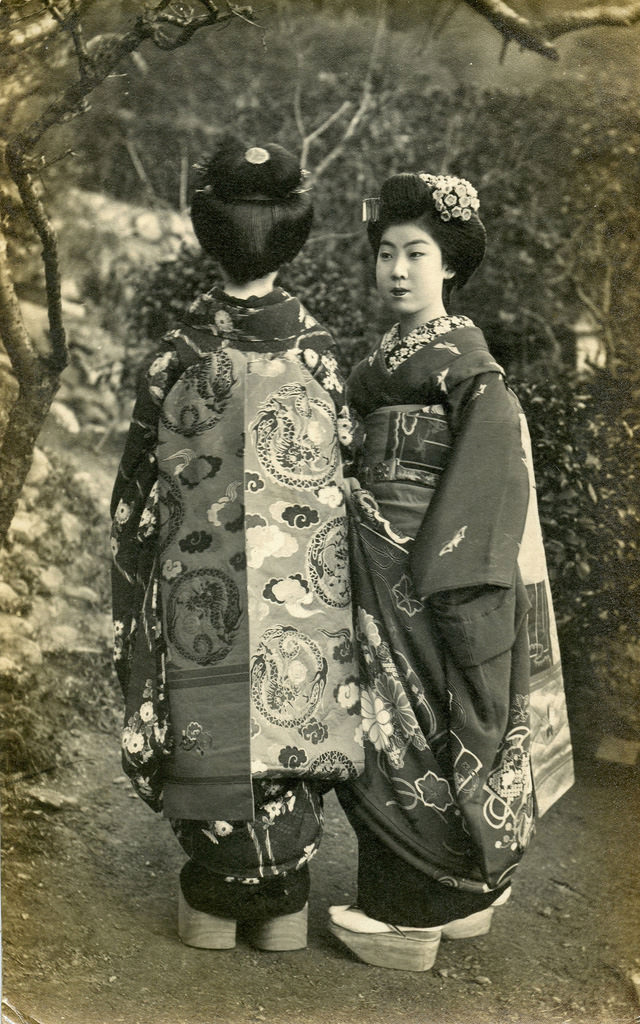We’re going to take a fascinating journey back to the Taisho Period in Japan (1912-1926) to explore the mesmerizing world of Maikos and Geikos. I’ve managed to dig up some truly captivating vintage photos of these graceful and enigmatic performers from Kyoto during the 1910s and 1920s. So, let’s step back in time and dive into this incredible visual treat!
The Taisho Period was a time of significant cultural change in Japan. As the country opened up to the West, the influence of Western culture was felt across all aspects of society, including fashion, music, and art. Despite these changes, the world of Maikos and Geikos remained a steadfast bastion of traditional Japanese culture.
Maikos and Geikos are skilled performers and artisans of traditional Japanese arts, including dance, music, and tea ceremony. Maikos are apprentice Geikos, and they undergo rigorous training to become fully-fledged Geikos. These women are known for their stunning kimonos, intricate hairstyles, and iconic white makeup. They lived in special districts known as “hanamachi” (flower towns), with Gion in Kyoto being the most famous. These districts were home to the elegant teahouses (ochaya) where Geikos and Maikos entertained their guests. During the Taisho Period, these districts were the epitome of high culture and refinement, attracting artists, writers, and other influential figures to enjoy the company of these talented women.
The training process to become a Maiko or Geiko was, and still is, incredibly rigorous. Girls as young as 15 or 16 would be apprenticed to a Geiko, who would become their mentor and guide. The training involved mastering various traditional arts, such as the shamisen (a three-stringed musical instrument), classical Japanese dance, tea ceremony, and the art of conversation. The process could take up to five years, after which the Maiko would “graduate” and become a fully-fledged Geiko.
Performances by Maikos and Geikos during the Taisho Period were highly sought-after experiences. The women were known for their ability to captivate audiences with their grace, beauty, and skill in performing traditional arts. One unique aspect of their performances was the use of “kouta” (little songs), which were short, poetic songs that often told stories of love and longing. Kouta were typically accompanied by the shamisen and were a key component of the Geiko and Maiko repertoire.
These captivating photos offer a rare and authentic look into the world of Maikos and Geikos in Kyoto during the Taisho Period. Their elegance, artistry, and dedication to their crafts are truly awe-inspiring. These images serve as a reminder that the beauty of tradition and culture can truly stand the test of time.












